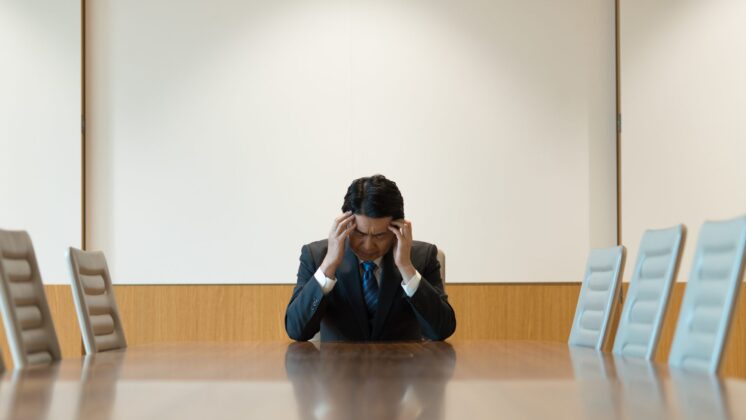As COVID-19 has continued to spread, businesses have struggled worldwide.
Tourism, transportation, lodging, events, food and beverage—a huge range of industries have been severely affected by the global pandemic. Despite emergency financial assistance from governments, many companies are struggling to pay their workers, their rent, and their creditors.
For some, the B word—bankruptcy—is looming.
But bankruptcy doesn’t have to mean the end of the road. It might even be the first step to financial recovery. To benefit from the protection that bankruptcy offers, of course, business leaders need to know the rules of the game. In the US, that means navigating the Chapter 11 form of corporate bankruptcy. Japan has a similar system based on the Corporate Reorganization Act and the Civil Rehabilitation Act.
How exactly does it work?
The Background on Business Bankruptcies
Japanese bankruptcy law was originally designed to allow creditors to get money back from failed companies. If a business got into financial trouble, but could still be saved, its only recourse was to appeal directly to its banks—the law offered no help. By contrast, in the US, Chapter 11 focused on business revitalization—that is, helping struggling companies get healthy again through drastic cuts in debt and the injection of capital by new sponsors.
Japan changed course in the late 1990s, during the “lost decade” after the stock and property bubble burst. Banks were less willing to help struggling borrowers, so, inspired by Chapter 11, the government passed the Civil Rehabilitation Act in 2001. It followed that by creating a new fund, the Industrial Revitalization Corporation of Japan (IRCJ), to invest in cash-strapped companies. The IRCJ played an active role in revitalizing well-known businesses such as Kanebo, the cosmetics maker, and Daiei, a national supermarket chain.
Japan Airlines (JAL), which has been hit hard by the current corona recession, has gone bankrupt twice—first due to SARS in 2002, and then again with the global financial crisis that began in 2008. The company filed for bankruptcy protection under the Corporate Rehabilitation Act in 2010, receiving a large cut in bank debt and a 350-billion-yen investment from the Enterprise Turnaround Initiative Corporation of Japan (ETIC), also backed by the government.
Under the leadership of Chairman Kazuo Inamori, JAL bounced back. Other businesses such as golf courses, regional inns, and retailers have found second chances through the Corporate Rehabilitation Act.
How does bankruptcy protect debtors?
In the United States, companies are said to “file for bankruptcy protection.” The reason bankruptcy is called “protection” is because the system is designed to protect indebted companies from aggressive attempts by creditors to collect. So while the word “bankruptcy” tends to carry a negative connotation (especially among companies in Japan), bankruptcy protection can actually benefit everyone. After all, if a business collapses completely, not only will workers lose their jobs, but there won’t be much money left for creditors, either.
So how does bankruptcy protect debtors? Two typical mechanisms are automatic stays and DIP finance.
Next Article
Japanese Gods, Art, and Management Theories in the Modern Era
Automatic stays
Issued by a bankruptcy court, an automatic stay stops a company’s creditors from trying to collect debt. Once a company files for bankruptcy and starts court proceedings, all debt collection is automatically banned in principle.
It’s easy to imagine the words when a company is about to go bankrupt. Suppliers might send convoys of trucks into warehouses to get their inventory back, or even rush to seize computers and other items from offices. When a bank is about to go bankrupt, creditors—in this case, depositors—famously rush to withdraw funds. The automatic stay prevents this panic-driven behavior from accelerating a company’s demise, even buying time for some companies to be saved.
In this sense, filing for bankruptcy is not a death sentence for the company, but rather a stay of execution that sends bleeding companies to the ER.
DIP Finance
DIP stands for “debtor in possession.” It refers to an emergency relief loan for companies on the verge of bankruptcy. Under insolvency law, DIP financing has priority over any other claims accrued prior to the commencement of bankruptcy proceedings. This prioritization mechanism encourages new funding.
Access to cash is especially important when things are going badly. When a company’s cash flow deteriorates, suppliers who were previously willing to settle purchases later suddenly start demanding cash up front, and banks become reluctant to provide additional financing. DIP financing is designed to break this vicious cycle.
Next Article
Why Failure Is Good for Success—and Growth
Restructuring Debt: The Debt-Equity Swap
Debt-equity swaps (DES) involve the exchange of debt for equity, or ownership stakes in a company. They are used to reduce the burden of debt repayments in a business revitalization. In this type of transaction, debt is converted into non-repayable shares of stock to improve the company’s immediate cash flow. In return, lenders-turned-owners can receive dividends or capital gains from the sale of shares when the company’s performance recovers.
In the 2010 JAL corporate reorganization, the ETIC invested 350 billion yen. When things finally turned around, its shares were worth nearly twice as much—660 billion yen.
Bankruptcy as a Strategic Option
In Japan, bankruptcy is seen as a source of shame. Managers are branded as failures and often not given another chance. In general, paying one’s debts is a virtue, and Japan should be proud that it holds that virtue highly. But a culture that drives managers to suicide because they can’t pay their rent or satisfy their creditors takes things too far.
Americans take a cooler view, seeing bankruptcy as an option for business owners to re-negotiate with creditors. Many US airlines that have filed for Chapter 11 several times over the past thirty years continue to operate.
More recently, the Canadian circus troupe Cirque du Soleil, which has been unable to perform due to the coronavirus pandemic, announced this summer that it was looking for alternative debt restructuring. This included filing for Chapter 15 bankruptcy, a foreign debtor version of Chapter 11. At the end of November, the company announced that it was emerging from Chapter 15 protection and completing its sale to a group of creditors.
COVID-19 may drive many businesses to the point of no return. Persistently negotiating deferrals with banks and landlords based on a relationship of trust is a top priority for a business owner. But business owners also need to understand their legal options. They should be ready to take advantage of bankruptcy, if necessary, rather than see it as a disgrace. Sometimes, it’s the most responsible way to ensure a company’s future.
This article was originally published in Japanese on Chikenroku.





